Life without him is not living.
How can anyone live without Mahler? Standing at the cusp between the classical romanticism of Tchaikovsky and Schubert and the atonality of Stravinsky and Berg, he changed music as we know it. Whether through his beautiful songs or his massive symphonies, one’s understanding and appreciation of nature is raised an order of magnitude through listening to his works.
Absent a few documentaries, the only dramatic movie of Mahler’s life is the one made in 1974 by Ken Russell, much of it filmed in the Lake District of England, as the production budget was tiny and the crew could scare afford to decamp to the Tyrol for the right scenery. Proving again that money and results are frequently poorly correlated in movie making, Russell does a masterful job, with his usual obsessions and eccentricities thrown in.
In addition to dramatic intensity, the movie has some exceptional photography, a few frames of which I excerpt below. My original was a VHS copy which was pretty bad, though it was in widescreen. Now I have tracked down an ex-rental DVD which is a little better, though unfortunately in 4:3 format. One day someone will remaster this long forgotten out-of-print work and put it on BluRay with proper formatting. Meanwhile, the second rate DVD is all I have, so excuse the poor quality of what follows.
Mahler is acted by Robert Powell, every bit as special here as in Zefirelli’s Jesus of Nazareth. He gives it his all, never overacting.
The movie opens with some extraordinary imagery. After we see his lakeside hut explode in flames the director cuts to Mahler’s wife, Alma, trying to escape from a cocoon – the allegory being how his genius stifled her far from trivial musical talents.
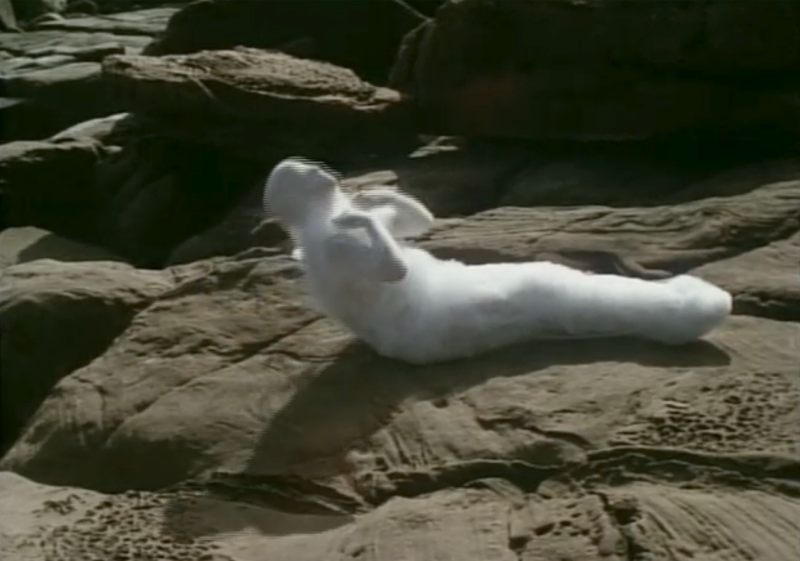
Alma Mahler tries to escape from the cocoon.
The narrative takes place on a train where Alma tries to decide, over the course of the journey, whether to leave Mahler for a dashing soldier. Needless to add, Russell cannot resist a funny dig at Visconti’s Death in Venice, with this scene glimpsed on the train platform:
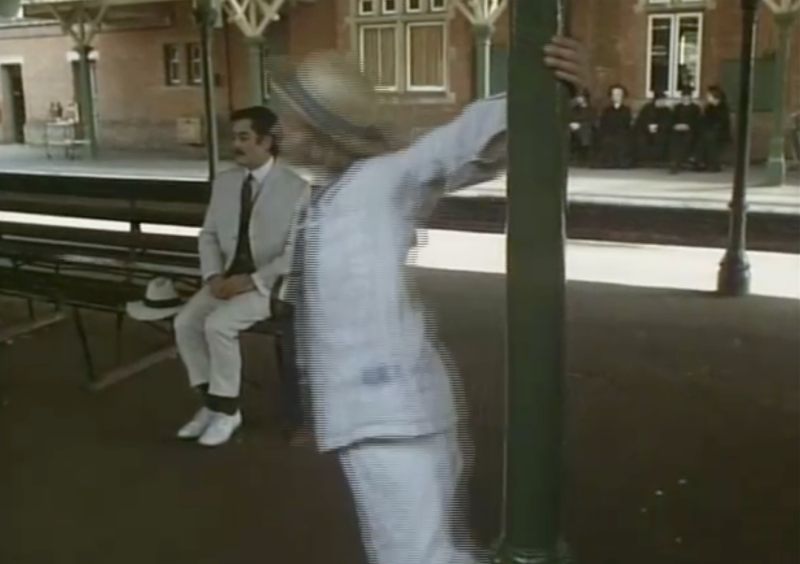
Mahler as von Aschenbach.
Another cut to a lakeside scene recalls nothing so much as Thomas Eakins’s famous picture:
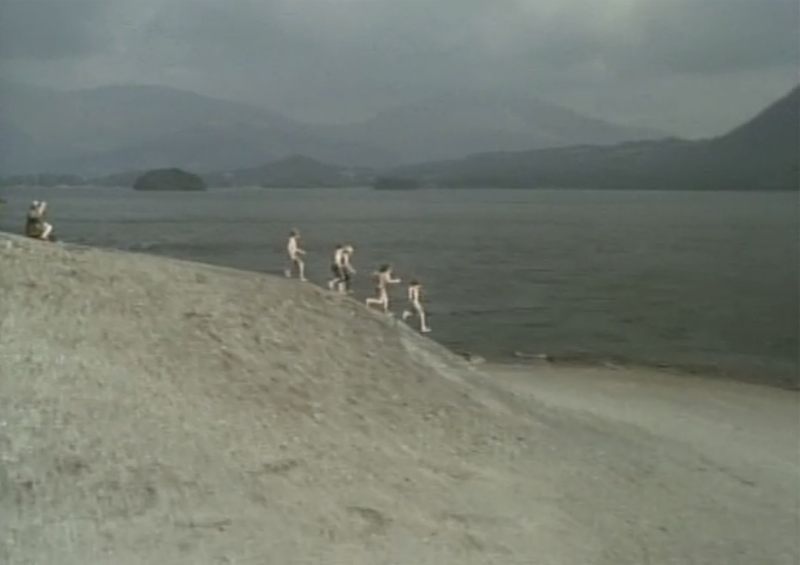
A recreation of Eakins’s The Swimming Hole
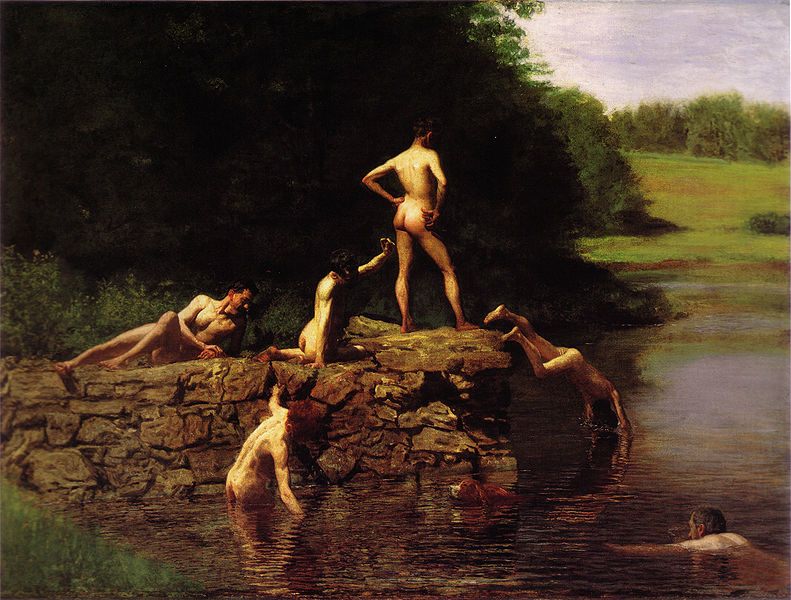
The Swimming Hole by Thomas Eakins.
As the train wends its way through the Austrian countryside there is an unforgettable image of Mahler as music plays in his head.
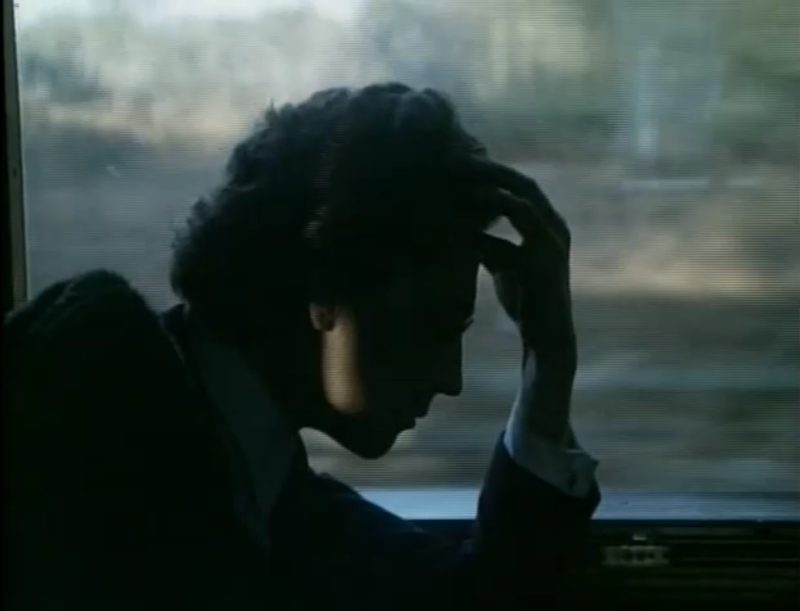
Robert Powell IS Mahler.
But if I have one favorite moment from this orgy of imagery served up by Russell, it is the scene where Mahler threatens to dunk Alma in the lake from the same little hut which explodes in flames at the start of the movie. Set to the concluding bars of the first movement of the Sixth Symphony, you have to be clinically dead if the hairs on your back do not rise at this lush combination of sound and picture:
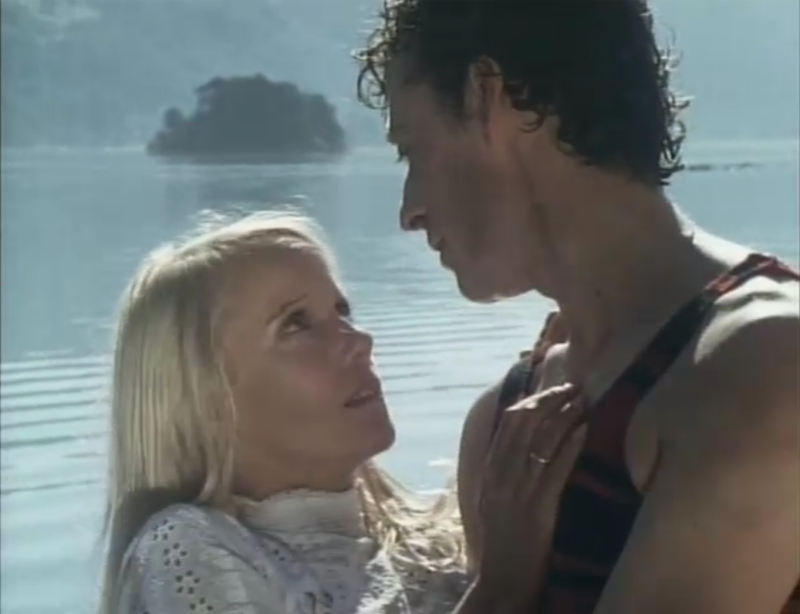
The lovely Georgina Hale is Alma Mahler.
A few years back I loaded up the CD player in my car with all of Mahler’s symphonies and drove up the coast highway of California from San Diego to the Oregon border, then inland across Death Valley listening to nothing else. If you want to appreciate what music tells you about nature, I recommend a like course of action.
It’s been said that the Austrians’ greatest genius was to convince the world that Hitler was a German and Beethoven an Austrian. There is no need for such posturing here, for Mahler was quite simply the greatest musical creation of a nation which gave us anti-semitism, an anti-semitism which he took on and conquered in his all too brief life. The movie is highly recommended. I confess that parts of the Second Symphony are dancing in my brain as I type ….
Update may 24, 2023:
Well, it’s finally here. I just watched a Japanese remastering of Mahler on the big screen. No more scratchy VHS definition. No more castrated 4:3 format. In glorious 16:9 widescreen BluRay quality. Thank you, Japan, and I’m still wiping the tears from my face. A glorious piece of movie making.